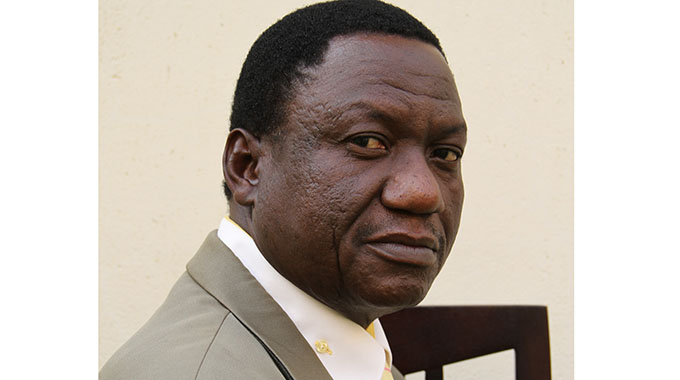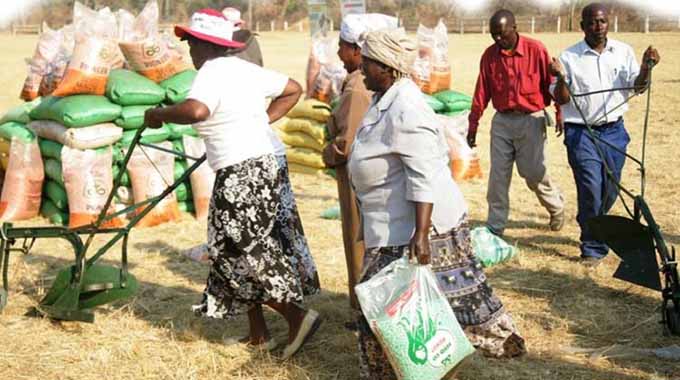Children forced into gold panning to make ends meet

Rutendo Rori Herald Correspondent
It is barely 5.30am in Uzumba Maramba-Pfungwe communal lands, northeast of Zimbabwe and the weather is chilly.
As dawn preludes daylight, Lucia (14) leaves her mother’s homestead and takes up an 8km walk to Mazowe River. Had it not been for the Covid-19 lockdown, she would be in Form One.
This particular day, she is late. She normally leaves home at 5am sharp.
Lucia starts on fast pace, intermittently breaking into trots and runs, down a valley, up a ridge and down another valley and up interlocking hills then down the river valley, which finally catches up with other children and women by the river bed.
By the time she reaches Mazowe River, her fingers are frost-bitten and cold, but she has to work.
She ignores the numbness.
Within minutes, she is in a pool, the water level almost on her waistline, deftly winnowing with a special basket at an angle that separates gold from ore. That is rare skill at her age.
The water is tinged brown by the gold extraction process, and is metaphorically the brown tears that give clear evidence of the pain the river has undergone day and night.
On the river banks, like moles, a congress of gold panners dig and forage for gold and immediately take the ore into the pool for processing.
The riverbank is mutilated and raped.
Trees, grass and little everything else is killed with reckless abandon.
The environment is deflowered. Hoes, mattocks, iron bars and many other tools are used to violate the riverbanks and the floor.
At that tender age, Lucia faces a packed adult workday load.
Lucia collects ore from the ground, helps carry it to the man-made processors where others, specifically women and children will wash and sieve it to extract valuable minerals. She was raised by a single mother who also depends on artisanal mining to bring food to the table.
Since her income does not allow her to provide for the family’s basic needs, Lucia’s mother asked her daughter to join in mining.
Artisanal mining is certainly not what Lucia wants to do in the future.
“I am being forced to do this by circumstances that are beyond my control. I desperately need the money to help my mother take care of my siblings. The work is dangerous and disturbs my studies. In future I want to enrol for a nursing diploma and become a certified nurse,” says Lucia.
When asked if it was possible for her to leave mining and work to pursue her dreams she says, “Yes. If someone could intervene and provide me with inputs to do lighter projects like livestock farming and horticulture. It could give me enough time to focus on my studies.”
Lucia is one of the children depending on artisanal gold mining to support their families’ income.
During a media tour along Mazowe River in Uzumba-Maramba-Pfungwe that was coordinated by the Zimbabwe Union of Journalists (ZUJ) in conjunction with the Environmental Management Agency (EMA) The Herald interviewed a number of teenagers working as artisanal miners.
More than half of the child miners interviewed had dropped out of school because of their incapability to pay school fees.
The mining site is a dangerous environment for children. Hazardous work is the worst form of child labour. This form of child labour is considered to be harmful and leads to adverse effects on the child’s safety, health (physical or mental) and moral development.
However, the children overwhelmingly preferred to be in school and had high aspirations for the future, their careers and their contributions to the community.
“I dropped out of school when I was in Form Three because my parents could not afford to pay my school fees. When they eventually died, I had to leave for Harare where I started working as a maid. I decided to come back and work at the mine since my employer would pay me peanuts,” says 18-year-old Rujeko (not real name).
“My wish is to become a professional baker in the future and I am sure if I get enough inputs, I can successfully pursue my dreams. My target is to raise roughly an amount of US$50 by end of this month and start investing in a baking business,” she says.
Child miners in UMP are not forced to go to work, but choose to work. They are taught by parents as a means of supporting the family’s income.
When asked about how much they earn per day from gold mining, most children said they raised roughly US$4 on a good day.
“Although it’s not much because of how strenuous the job is, with the US$4 I get per day, I can invest in food, uniforms and books to use at school,” says 15-year-old Tamuka.
“My parents used to do farming, but because of the drought that we incurred, it has become difficult to grow anything. There’s inadequate water,” he says.
“I am currently doing Form Four and I dream of becoming a journalist, that’s where my passion is. I don’t enjoy this job because I work as hard as a donkey. The money that I earn is not even enough for me to buy myself lunch, therefore most the days I work on an empty stomach.
“It is also difficult for me to balance between this job and my school work.”
Child mining is a form of child labour and this challenge will require long-term engagement and participation of a variety of stakeholders.
According to the International Labour Organisation (ILO), child labour refers to a subset of children’s work that is injurious, negative or undesirable to children and should be targeted for elimination.
Children are pushed by their parents to work at artisanal mining sites to make some money to add their family income, which contributes to child labour.
According to a study by UNICEF, seasonal agriculture makes it difficult for farmers to earn enough income to care for their needs and those of their households, coupled with the fact that farm products are mainly for home use. Small scale illegal mining is therefore pursued to supplement income earned from farming, which is still the main economic activity of people in Zimbabwe. According to statistics by the Zimbabwe Artisanal and Small Scale Mining Council, there are an estimated 500 000 artisanal miners across the country, and of these, 153 000 are women and children.










Comments